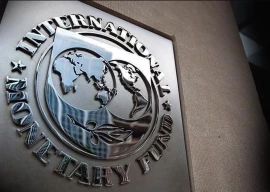
A recent report by the State Bank of Pakistan presents an intriguing yet disconcerting snapshot of the country's IT sector. While IT exports have surged by 24% in the fiscal year 2023-2024, reaching a commendable $3.2 billion from the previous year's $2.59 billion, this growth masks underlying vulnerabilities. The sector recorded an impressive $300 million in exports in June 2024 alone, a 33% increase from the previous year. This spike is largely driven by increased demand for Pakistani IT services in the Gulf Cooperation Council (GCC) countries, particularly Saudi Arabia.
These gains, however, are precariously balanced on the outcomes of bilateral agreements between Pakistan and GCC nations - agreements that have only just begun to show their promised benefits. While these pacts have opened doors for foreign investment in Pakistan's IT companies and startups, they have also cast a spotlight on the glaring deficiencies within our digital infrastructure. The establishment of innovation centres, centres of excellence and university branches are steps in the right direction, but they barely scratch the surface of what is needed to transform Pakistan into a formidable IT powerhouse.
The State Bank's interventions, such as increasing the retention limit for foreign currency in special accounts from 35% to 50%, and efforts to stabilise the rupee, have undoubtedly played a role in this uptick. Yet, these measures are mere band aids. Over the past five years, IT exports have nearly doubled, yet the growth trajectory has been anything but steady. This inconsistency is a damning indictment of the global political and economic instability, compounded by the erratic and often shortsighted policies of successive Pakistani governments.
The stark reality is that Pakistan's IT sector is teetering on the edge of unrealised potential. If the fundamental challenges plaguing this industry are not addressed with urgency, the much touted ambition of elevating IT exports to $15-20 billion annually will remain a distant mirage. The government's role here is not just critical - it is existential. The uninterrupted supply of high-speed internet is non-negotiable, and the removal of barriers to accessing social media platforms is imperative. The recent disruptions and sluggish internet speeds that have frustrated IT companies and freelancers alike are symptomatic of a broader malaise that threatens to derail the sector's progress.
The development of modern IT parks and incubation centres and the enhancement of telecom services are not luxuries - they are necessities. The failure to address these will stymie any progress towards attracting foreign IT investment, which requires not just a skilled workforce but one trained to meet international standards. Furthermore, the unreliable electricity supply remains a thorn in the side of any serious effort to build a resilient IT infrastructure.
For sustainable growth, the government must ensure that institutions providing IT education are linked with international certification bodies. This will enhance the quality of technology-based subjects and specialised IT skills, which are currently woefully inadequate. Additionally, integrating IT education at the school level is not just a forward-thinking measure - it is a survival strategy.
Moreover, given Pakistan's unique geographical and cultural context, the IT sector has an unparalleled opportunity to empower women. By integrating IT education into the curriculum for female students from an early age, Pakistan could cultivate a generation of highly skilled IT professionals. This would not only allow women to contribute to the economy while working from home, thus improving the standard of living for their families, but it would also enhance Pakistan's global reputation.
The government must take decisive action to promote STEM education for girls and allocate substantial resources to women-centric tech programmes. Without this, the dream of a gender-inclusive IT workforce will remain unfulfilled. IT companies, too, must step up by adopting robust gender-inclusive policies, ensuring safe transportation, providing daycare facilities, and fostering professional development opportunities for women.















1725352489-0/Untitled-design-(35)1725352489-0-270x192.webp)




COMMENTS
Comments are moderated and generally will be posted if they are on-topic and not abusive.
For more information, please see our Comments FAQ